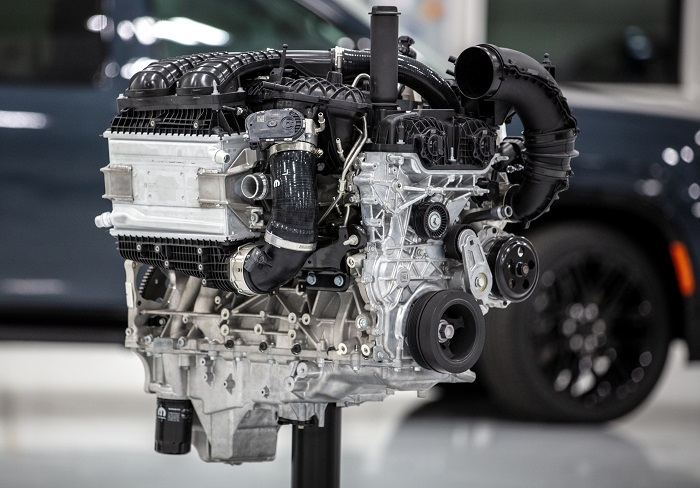The 2025 Ram 1500 recently arrived as the first Dodge/Ram pickup in decades to have no V8 engine. Some on social media claimed these were the first of their kind to have no V8 option, which is true for Ram but not for Dodge. Dodge Brothers, after all, were all four-cylinders when the brothers were alive; and they did not move to V8s until the late-1954 models. Even the one-ton pickups used six-cylinder engines, admittedly quite beefy ones; and the first V8s only had 172 bhp with 220 lb-ft of torque, far less than today’s base V6 engines (315 hp net, 269 lb-ft). Every legendary Power Wagon was “motorvated” by a special straight six.

The 2025 Ram 1500 has no Hemi engine options because Stellantis is tired of paying millions of dollars each year to Tesla for fuel-economy credits. Tesla and Stellantis will be competing soon around the world. Every dollar Stellantis gives to Tesla is one more dollar that can be invested in factories and engineering to fight Stellantis. It would be like Chrysler Corporation giving money to Toyota in the 1960s—generally, a bad idea.*
The straight six emits less pollution than the Hemi V8; it also adds 1-2 mpg, which doesn’t sound like much but is actually impressive for city mileage on a pickup truck. It will add up to massive reductions in carbon dioxide production and oil burning over time. The six does this while producing substantially more power than the Hemi did.

There’s also the little matter of how Ram is getting their engines; it appears they will be made on the old 5.7 Hemi assembly lines. That makes it rather hard to sell both.
For owners of the standard output six, there is another benefit: they take regular fuel, not midgrade. Some owners used regular with their Hemis, but they did not get the full benefit of the engine, and perhaps risked detonation. With the new “SST” (straight six turbo) Ram engines, regular is specified—and they still greatly outperform the old 5.7.
Those who get the high output six are getting far, far more power than any Hemi owner (except those who got the Hellcat-powered TRX). Ram didn’t use the 6.4 liter SRT Hemi, though the heavy duty models use a detuned version of it which seems likely to hang around for a while. Now, Hemi buyers can get a massive 540 hp under the hood—that’s quite a bit higher than the old 5.7 Hemi. It needs 91-octane premium fuel, but so did the 6.4 SRT engine—which, again, was not an option.

Some buyers are dubious about the new engines, claiming they are more complex (having twin turbochargers) and “overstressed.” It’s worth pointing out that the straight-six design is simpler than the V design, though; and is inherently better balanced. What’s more, every engine sold today is what we’d have called overstressed just a few years ago. New metals and processes have been making engines stronger, lighter, and stiffer since the era of the sleeve valve.
Mopar engineers put a great deal of work into the Hurricane Six; so far heavy Wagoneers with these engines seem to have been quite reliable. The old adage about not buying a new design in the first year is probably true, but in the long run, the new sixes will provide many benefits for Ram owners. One of them is not having to pay for a subsidy for Ram’s competitors.
* The 2023 annual report explores the problems behind Fiat Chrysler’s strategy of essentially hoping emissions rules would “go away.” FCA missed targets for 2021, 2022, and 2023, and will have to work to meet the 2024 target. The company can either pay hefty fines, buy more credits from Tesla at great expense, or “backfill” by exceeding targets in 2025-3030. This is the approach Stellantis has chosen, and it may affect production and pricing of every vehicle in the fleet. If electric and hybrid vehicle sales continue to grow, Stellantis will be in a good position to take advantage of the trend.